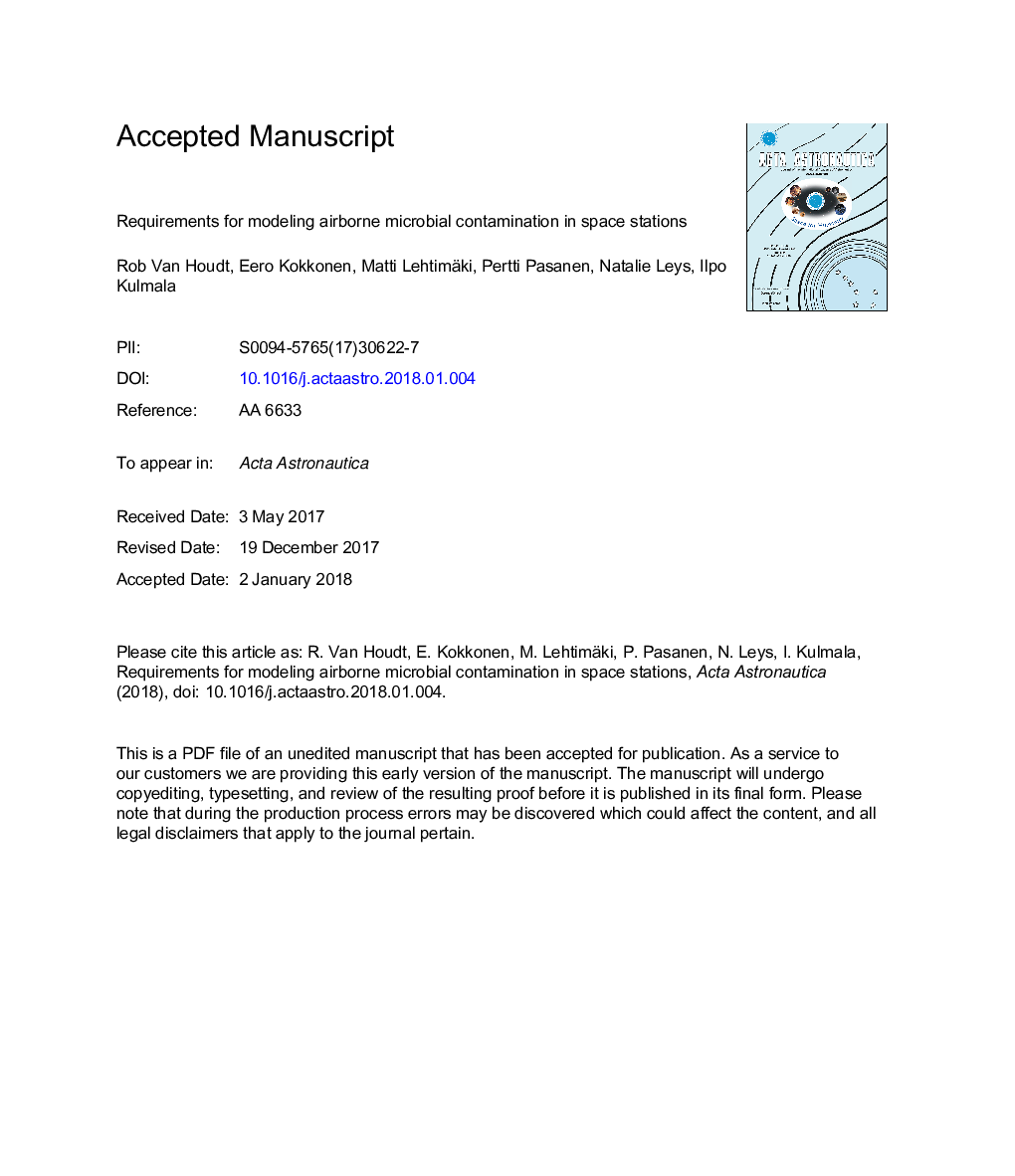| Article ID | Journal | Published Year | Pages | File Type |
|---|---|---|---|---|
| 8055737 | Acta Astronautica | 2018 | 33 Pages |
Abstract
Exposure to bioaerosols is one of the facets that affect indoor air quality, especially for people living in densely populated or confined habitats, and is associated to a wide range of health effects. Good indoor air quality is thus vital and a prerequisite for fully confined environments such as space habitats. Bioaerosols and microbial contamination in these confined space stations can have significant health impacts, considering the unique prevailing conditions and constraints of such habitats. Therefore, biocontamination in space stations is strictly monitored and controlled to ensure crew and mission safety. However, efficient bioaerosol control measures rely on solid understanding and knowledge on how these bioaerosols are created and dispersed, and which factors affect the survivability of the associated microorganisms. Here we review the current knowledge gained from relevant studies in this wide and multidisciplinary area of bioaerosol dispersion modeling and biological indoor air quality control, specifically taking into account the specific space conditions.
Related Topics
Physical Sciences and Engineering
Engineering
Aerospace Engineering
Authors
Rob Van Houdt, Eero Kokkonen, Matti Lehtimäki, Pertti Pasanen, Natalie Leys, Ilpo Kulmala,
